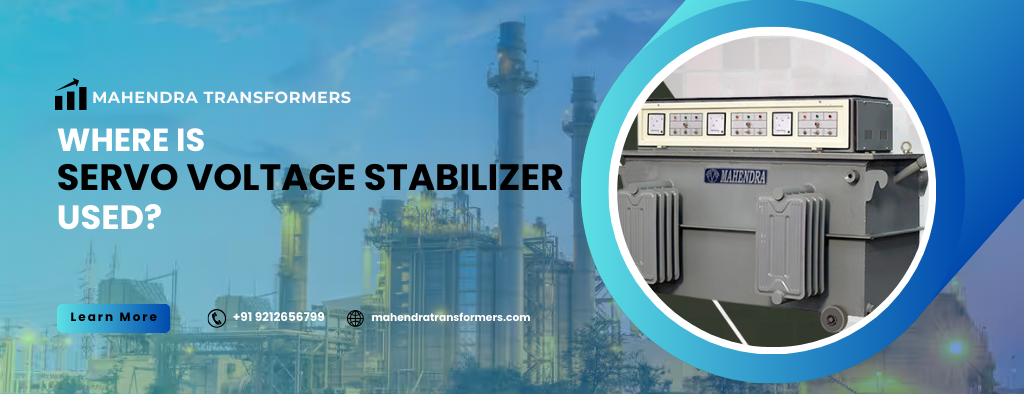One of the very prominent questions in the industry is “Where Is Servo Voltage Stabilizer Used?” To answer this question, you need to understand what servo voltage stabilizers are and how they work. Through this guide, we will understand the common usage of these stabilizers, why they are important in those environments, and where they are used.
What is a Servo Voltage Stabilizer?
Servo stabilizers are protectors for electrical components. They work like a bridge between the incoming power supply and your equipment. They constantly monitor the coming voltage and regulate voltage fluctuations in too-high and too-low situations. They use a servo motor to adjust the voltage to the desired level. So the output remains stable while the input voltage varies.
However, a consistent output voltage is crucial for the proper functioning of various types of equipment. Servo voltage stabilizers maintain a consistent output voltage. So, it has become essential to the electricity stream and keeping your electrical gadgets healthy.
Why Use a Servo Voltage Stabilizer?
Servo voltage stabilizers work as shields, absorbing these fluctuations and providing a smooth power flow. There are several reasons to use this machine.
- Minimize harmful spike engagement in the electrical system
- Protect your electronics from voltage flickers
- Maintain consistent performance and keep things smooth and running
- Extends the life of electronic equipment
- Enhance the sound and picture quality of the devices
- Stop harmful fire hazards of sudden voltage
- Save yourself from repairs and replacement costs
Where are Servo Voltage Stabilizers Used?
Servo voltage stabilizers are used in a wide range of applications. Here are some common places where you can find them:
Industrial Settings
Servo voltage stabilizers are primarily used in industrial settings. In factories and production plants, machinery and equipment are highly sensitive to voltage fluctuations. Any deviation in voltage can lead to machinery malfunctions, production delays, and equipment damage. Servo voltage stabilizers regulate the power supply and let them work for smooth operations.
Medical Facilities
Maximum medical equipment, such as MRI machines, X-ray machines, and other diagnostic tools, require a consistent power supply to function correctly. Fluctuating voltage can damage these expensive gadgets, cause doubtful patient reports, and compromise patient care.
Commercial Institutions
Various commercial buildings, such as office complexes, shopping malls, hotels, restaurants, and more, are greatly dependent on servo voltage stabilizers. These places rely on different electrical equipment, such as elevators, air conditioning units, lighting systems, security systems, computers, and many other appliances. Insufficient or flicking voltage can prevent these systems from operating.
Residential Sector
Electronics in residential houses also need a consistent power supply. Servo voltage stabilizers protect household appliances such as refrigerators, air conditioners, and televisions from voltage surges.
Data Centers
Data centers are constructed for servers and other sensitive IT infrastructure. They require a steady and safe power supply. Voltage fluctuations can corrupt data, damage hardware, and interrupt service. The stabilizers maintain a consistent voltage level and protect the equipment used in these centers.
Moreover, servo voltage stabilizers are also used in airports, railways, ports, metros, and every place where we need to run different electronic equipment is needed.
Conclusion
Servo voltage stabilizers are responsible for safe voltage supply. The development of technology increases the dependency on various electrical equipment and the demand for voltage stabilizers.
Mahendra Transformers is one of the most trusted servo voltage stabilizer manufacturers. They deal in various ranges of stabilizers to protect your electrical appliances. Their products are designed using advanced technology, that provides a substantial power supply. Plus, their products are durable, efficient, and cost-effective.

